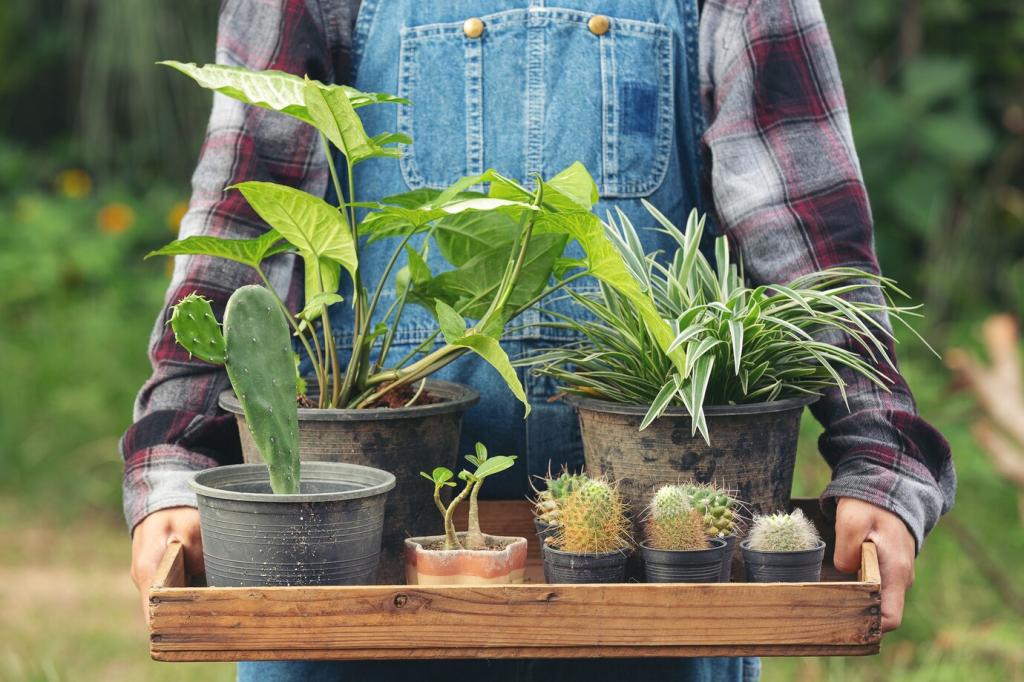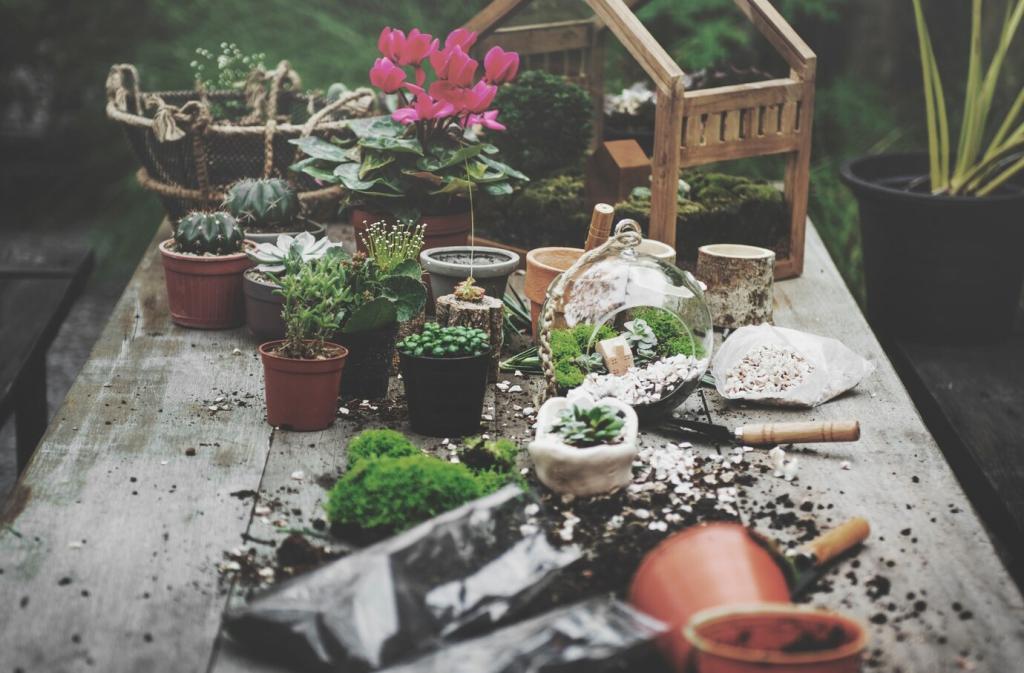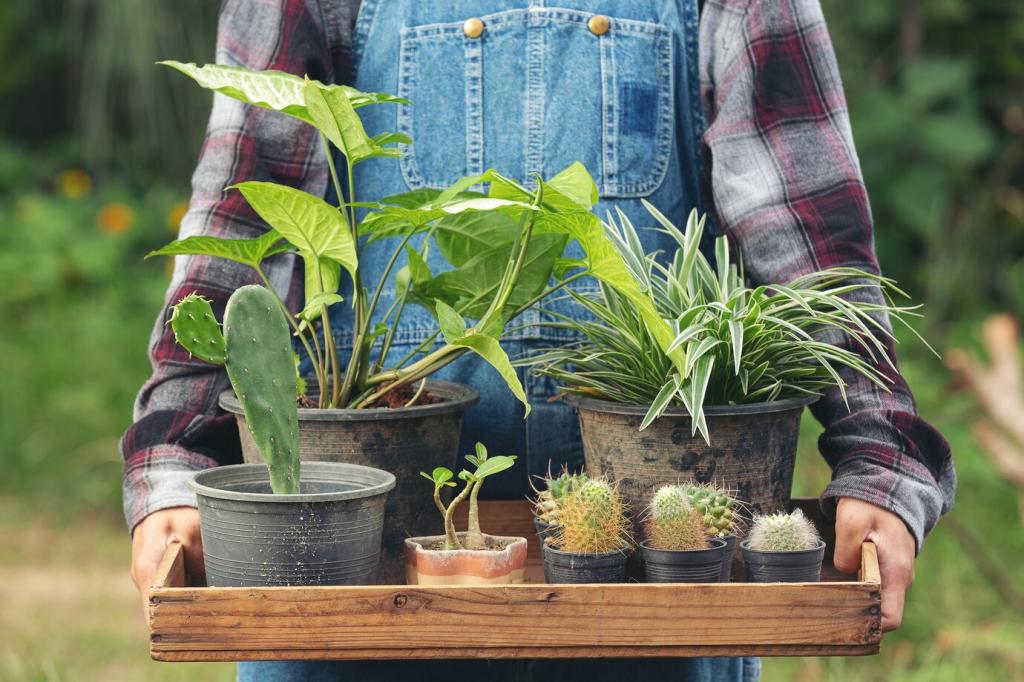Humidity Solutions for Indoor Plants in Close Quarters
Understanding Humidity in Small Spaces
The Significance of Humidity for Indoor Plants
Humidity plays a crucial role in plant physiology. Many tropical and subtropical plants evolved in naturally humid climates, making them susceptible to the dry air commonly found indoors. Low humidity can cause brown leaf tips, wilting, and stunted growth, as moisture evaporates from leaves faster than roots can replace it. Addressing humidity needs is especially important in confined spaces, where airflow is limited and the air can quickly become too dry for sensitive plants.
Factors That Reduce Humidity Indoors
Modern apartments and small homes are designed for comfort, but amenities like heating and cooling systems can strip air of moisture. Windows kept tightly closed for noise or climate control, combined with minimal indoor water sources, rarely provide the humidity levels that many houseplants crave. Over time, this dry environment takes its toll, making it essential to assess and modify your surroundings to create a more plant-friendly climate, even when space is limited.
The Role of Room Size and Air Circulation
Close quarters tend to exacerbate humidity issues. Limited square footage means less air volume, so moisture added is quickly dissipated or absorbed, often unevenly. Poor air circulation can also create microclimates—some corners remain dank while others are bone dry. To optimize plant health, it’s important to evaluate how air moves within your space and how that impacts humidity distribution, focusing not just on the entire room, but on the micro-environments where your plants reside.

Compact Humidifiers for Limited Spaces
Humidifiers designed for tabletop or desktop use offer a practical way to elevate humidity without occupying significant floor space. Many modern models are sleek, quiet, and energy-efficient, making them ideal for apartments or shared rooms. By targeting humidity to specific plant zones rather than the entire room, you can ensure effective moisture delivery right where it’s needed most. Regular maintenance and strategic placement are key to maximizing results while avoiding excess dampness elsewhere.

DIY Humidity Trays and Pebble Solutions
A simple tray filled with water and pebbles can be a surprisingly effective method for increasing humidity around plants. By placing pots atop the pebbles, water can evaporate upward, delivering moisture directly to a localized area without wetting plant roots or surrounding surfaces. Best of all, these trays require minimal space, are easy to refill, and can be hidden under clusters of plants for discreet use. This low-tech, high-impact method is especially well-suited to close quarters, where every inch counts.
Preventing Mold and Mildew in Close Quarters
Excess humidity, particularly in stagnant or poorly ventilated spaces, can lead to the growth of mold and mildew. These issues not only damage plants but can also affect walls, furniture, and your health. Vigilance is necessary: monitor both the visible and hidden corners of your space, keep moisture-producing elements clean, and ensure air circulation is adequate. Proactive care allows you to nurture your plants without inadvertently inviting unpleasant or hazardous conditions into your home.
Avoiding Overwatering and Plant Stress
With increased humidity, plant watering needs often decrease. Overwatering becomes a common mistake, leading to root rot and pest problems. It’s essential to adjust your routine, paying close attention to soil moisture levels rather than relying on a predetermined schedule. Choose pots with good drainage, use appropriate soil, and observe each plant’s response to the altered environment. Thoughtful watering practices will help you strike the right balance, keeping your greenery healthy amid elevated humidity.
Monitoring and Adjusting Humidity Levels
Consistent monitoring lets you fine-tune your humidity solution for the best results. Tools like digital hygrometers offer precise readings and can alert you to changes that might otherwise go unnoticed in a small room. Regularly check conditions near your plant clusters and be prepared to adjust your approach. Flexibility is key: as seasons shift or living arrangements change, your humidity strategy should evolve too, ensuring your indoor oasis continues to thrive.

